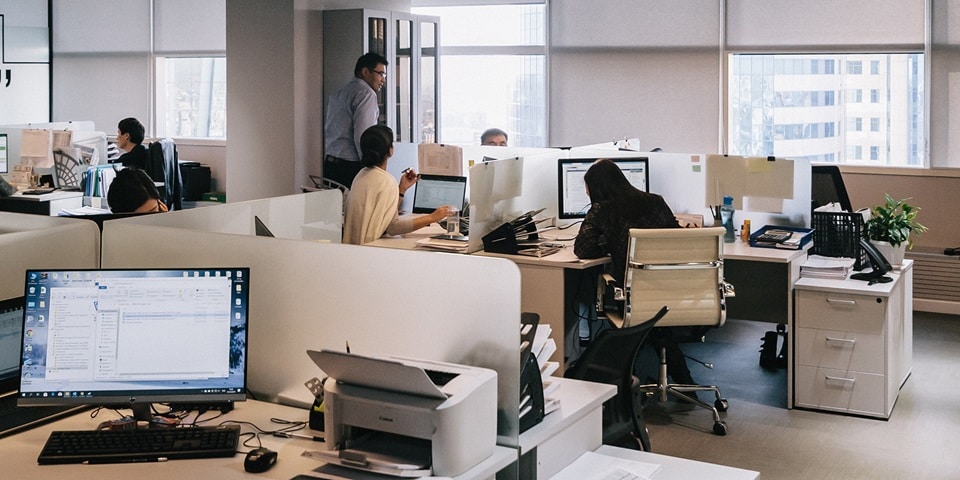According to its research, 50 per cent of organisations surveyed say staff will expect higher protections at work when they return to the office, while 67 per cent have established ways to track the location of their staff and remote ways of working.
PwC’s investigation shows businesses are designing workplaces that enable social distancing in the lead-up to staff coming back into the office. They are remodelling office infrastructure by fitting desks with plexiglass shields, creating space between workstations and investing in tools like collaboration software. They have also put in place sanitisation protocols and scheduled more stringent, regular cleaning of premises.
Vanessa Giannos, founder of The HR Experts, says it’s a good idea to step up office cleaning so surfaces are disinfected every night. “Provide hand sanitiser and antibacterial wipes and ensure everyone has their own headset. If the business is still hot desking, ensure everyone thoroughly wipes down their desk, keyboard and mouse with disinfectant wipes.”
“Every business will have its own protocols, and it’s essential to follow health authorities’ advice”
Giannos says a tag team approach is one way to maintain social distancing, with different teams working different shifts. “Any vulnerable employees should remain working from home.” She also says this time can be an opportunity to build the business’s culture. “Encourage people to find new ways to connect, collaborate and support each other.”
Cover counts
Insurance also has a role to play as people transition back to more usual working arrangements, says Michael White, Steadfast’s broker technical manager.For instance, businesses face a potential liability should a staff member or visitor to their workplace contract COVID-19 as a result of being exposed to the disease while there.
Even before that, businesses have responsibilities to ensure their staff are protected should one of the team’s relatives, household members or even someone who works in the building comes into contact with someone who has been diagnosed with COVID-19. Every business will have its own protocols, and it’s essential to follow health authorities’ advice.
But firms should be ready to require staff to work from home should they be exposed to someone who has the virus.“Businesses must ensure their workers’ compensation policies are up-to-date and reflect any changes that have happened in the business. This includes making sure payroll declarations are correct,” White explains.
While an employee will typically make a claim against the business’ workers comp policy, it’s wise for organisations to have up-to-date and easily accessible information on their intranet. This should cover basic information about how the insurance works, what to expect as the claim progresses and the support the business will give them.
It’s also important to understand workers’ comp is state or territory-based and varies significantly between these jurisdictions. Check your state’s or territory’s relevant authority for more information. It’s important businesses remain vigilant and continue to provide support to staff through this period. It’s a good idea to check out the resources, checklists and workstation set-up guides
SafeWork Australia has available on its website for businesses to use to help ensure their workplaces are safe and to help protect staff during the pandemic and beyond.
Important note
This information is provided to assist you in understanding some of the common considerations in reviewing your workers’ compensation insurance in particular. It is not complete, so please request full details from your Steadfast insurance broker. Deductibles, exclusions and limits apply to most insurance policies. Insurance policies issued by various insurers can differ.


